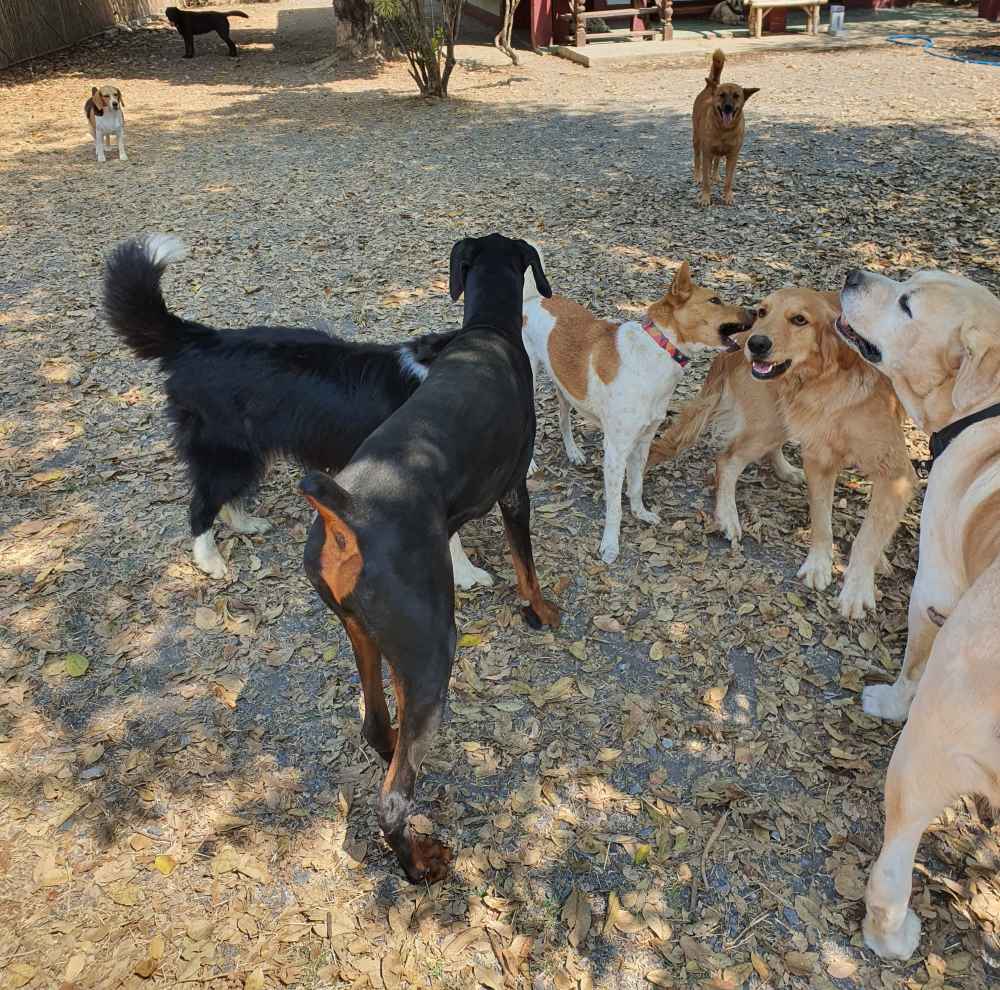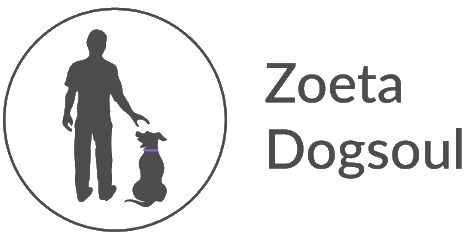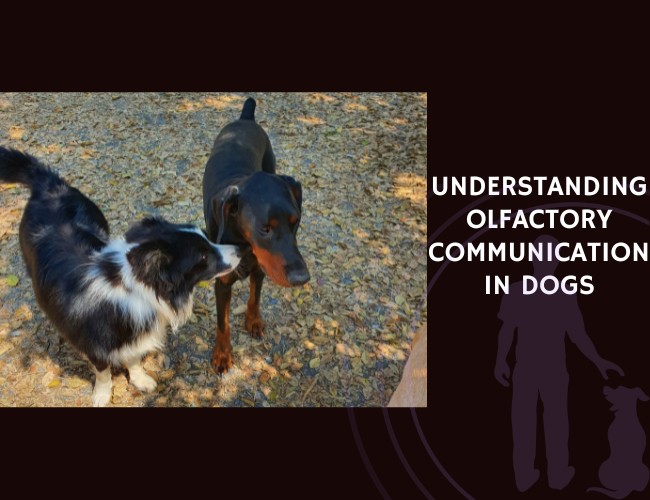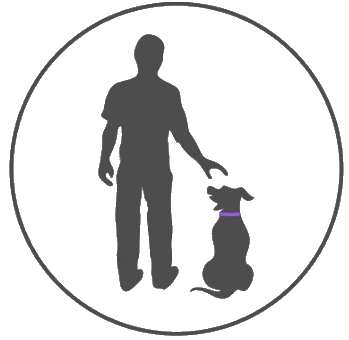Imagine if every breeze carried a story, every footprint held a message, and a sniff could unravel complex narratives. For dogs, this is a reality. The significance of olfactory communication in the animal kingdom cannot be overstated, and our canine companions are masters of this domain. Animals rely on scent to navigate their world, find food, avoid predators, and communicate with one another. Dogs, with their exceptional olfactory capabilities, use this sense in ways that are both fascinating and vital to their survival and social interaction.
The Significance of Olfactory Communication in the Animal Kingdom
Olfactory communication is the silent language that whispers secrets of the wild and the domestic alike. In the animal kingdom, it plays a crucial role, often more so than sight or sound. For many species, scents convey essential information about identity, fertility, and territory. Dogs especially have honed this form of communication to an art, using it to understand their environment and the creatures within it with astonishing precision.
Brief Overview of How Dogs Use Scent to Communicate with Each Other and with Humans
For our four-legged friends, every scent tells a tale. Dogs use scent to communicate with each other through a variety of methods, such as urine marking, which serves as a canine calling card. They can determine the age, sex, and even the mood of the message-leaver. With humans, dogs can detect subtle changes in scent to read emotions or health conditions, often alerting us to issues we’re unaware of. Their communications with us extend beyond the wag of a tail – it’s also in the eager sniff of a hand or the attentive pause at a scent trail.
Introduce the Concept of Olfactory Receptors and the Dog’s Exceptional Sense of Smell
At the heart of a dog’s olfactory prowess are its olfactory receptors – specialized cells that detect odor molecules. While humans possess around 6 million of these receptors, dogs boast up to 300 million. This remarkable biological endowment allows them to discern individual components of a scent cocktail, where we might only smell a vague fragrance. It is this extraordinary sense that empowers dogs to track a trail days old or diagnose diseases through breath, sweat, or urine samples.
As we delve deeper into the world of canine scent-work, we’ll explore how dogs’ olfactory communication shapes their perception of the world. Understanding the subtleties of this language can enrich the bond between dogs and their human counterparts, opening up new avenues for training, care, and mutual respect.
The Language of Scents: How Dogs Communicate Through Olfaction
Imagine a world where every breeze carries a story, where each footprint holds a message, and where a sniff can reveal an encyclopedia of information. This is the intricate world of canine olfactory communication. Dogs have a remarkable ability to detect and interpret scents, and this forms the basis of a complex language that is largely invisible to us humans.
Diving into the Intricate World of Canine Olfactory Communication
Dogs experience the world primarily through their noses. The act of sniffing allows them to pick up chemical compounds that are imperceptible to us. These odors can signal everything from the presence of food to the emotional state of another dog. Each scent tells a story, and dogs are adept at deciphering these narratives. For example, when a dog enters a new environment, you might notice it begins to sniff around meticulously; it’s reading the ‘scent scene’ much like we would read headlines in a newspaper.
Exploring the Role of Pheromones and Scent Marking in Conveying Information
Pheromones play a crucial role in the olfactory communication system of dogs. These chemical messengers are secreted by animals and trigger social responses among members of the same species. In dogs, pheromones can indicate a range of states from fear to readiness to mate. Scent marking is another common way dogs communicate with each other. By leaving their own scent on trees, fire hydrants, or even your sofa, dogs are doing more than just relieving themselves; they’re leaving a calling card that conveys territorial boundaries, identity, and even mating availability.
Understanding the Behavioral Cues Associated with Olfactory Communication in Dogs
The behavior of dogs during olfactory communication is a dance of nuanced gestures and signals. Tail wags, body posture, and even the intensity of sniffing can all be part of the conversation. When a dog meets a new friend, you may see a careful approach followed by a mutual sniffing session. This ritual allows dogs to learn about each other’s diet, gender, mood, and health. It’s a behavioral dialogue where each sniff is met with a calculated response, whether that’s playful engagement or cautious withdrawal.
Decoding the Why: Evolutionary and Behavioral Implications of Olfactory Communication
In the quest to understand our canine friends, we’ve learned how they communicate through a sophisticated olfactory language. But why did such an intricate system evolve? What does it mean for their social lives and behavior? These are crucial questions that offer insight into the inner workings of a dog’s world.
Evolutionary Advantages of a Heightened Sense of Smell for Dogs
The evolutionary path that dogs have trodden is paved with survival choices that favored those with keen noses. A heightened sense of smell has been a pivot for survival in the wild. It’s the difference between catching prey or going hungry, sensing a friend or a foe, and finding a mate or living in solitude. This powerful tool has guided dogs through their evolution, from their ancestral wolves to the diverse breeds we see today. In fact, research indicates that dogs can have up to 300 million olfactory receptors in their noses, compared to about six million in humans. This incredible sensory equipment allows them to detect odors at concentrations nearly 100 million times lower than what our noses can pick up.
Social and Territorial Implications of Olfactory Communication
Social structures in the canine world are largely shaped by who smells like what. Scent marking, for example, is like leaving a business card or a status update at strategic locations. It tells other dogs who’s been there, their gender, reproductive status, and even their mood. This complex chemical messaging governs social interactions, from establishing hierarchies to preventing conflicts. Dogs rely on their sense of smell to recognize family members and build social bonds. Moreover, territory is paramount; scent marking acts as a ‘No Trespassing’ sign, clearly demarcating personal space to avoid unwanted intruders.
Impact of Olfactory Communication on Canine Behavior and Psychology
Understanding the world through scents significantly impacts canine behavior and psychology. When a dog follows a scent trail, it’s engaging in an activity that’s both mentally stimulating and instinctually fulfilling. This olfactory exploration can reduce stress and alleviate boredom, which is essential for a dog’s mental health. Additionally, when dogs interpret human scents, they’re not just detecting the presence of their owner; they are reading a story laced with emotional cues. This can reinforce the human-animal bond and even aid dogs in tasks like detecting medical conditions or changes in their owner’s well-being.
Through the lens of olfaction, dogs navigate a world rich with information invisible to our eyes. Their sense of smell guides them in ways that are deeply rooted in their evolutionary past and intricately tied to their day-to-day existence. By decoding the ‘why’ behind their olfactory prowess, we gain a deeper appreciation for the complexities of canine communication and its impact on their lives.
Unraveling the Science: Olfactory Receptors and Neural Processing in Dogs
How do dogs perceive the world around them so differently from us? To answer this, we must dive into the physiology of a dog’s olfactory system. A dog’s nose is not just its most prominent feature; it’s a sophisticated organ that allows them to interpret countless scents and even detect changes in emotional states. But what happens beneath that wet, twitching snout?

The Physiology of a Dog’s Olfactory System
The magic begins with the olfactory receptors. These specialized cells are located deep within the nasal cavity. Dogs possess an estimated 300 million olfactory receptors, a staggering number compared to the approximately 6 million in humans. This abundance allows for an exceptional breadth of scent detection. The interior of a dog’s nose is lined with a mucous membrane that captures odor particles. These particles bind to the olfactory receptors, which then send signals to the brain for interpretation.
Capabilities of Canine Olfactory Receptors
Dogs have the remarkable ability to detect not just one scent but multiple layers of odors, even if they’re intermingled. Their olfactory receptors can pick up on pheromones, the chemical substances animals use to communicate. For instance, when a dog sniffs a tree or a lamppost, it’s not just smelling the object itself but also interpreting a complex story of all the other dogs that have visited that spot. Think of it as a form of social media where every “like” or “comment” is left behind for others to find.
Neural Processing of Olfactory Stimuli
Once the olfactory receptors capture the scent information, it’s time for the brain to take over. The signals travel along the olfactory nerve to the olfactory bulb, which acts as a relay station to the rest of the brain. Here’s where things get truly fascinating. Dogs have a large portion of their brains dedicated to analyzing smells – it’s like having a supercomputer designed specifically for scent processing. This cerebral specialization is why dogs can follow a trail hours or even days old, helping in search and rescue missions or detecting contraband.
The influence of these olfactory stimuli on a dog’s behavior cannot be overstated. Scent determines how dogs interact with their environment, dictate social hierarchies, and even choose their favorite people. The processing of these smells can trigger various behaviors—from the wagging of a tail in happiness to the growl of warning—illustrating the integral role scent plays in canine communication.
In sum, the olfactory capabilities of dogs are not just impressive; they are essential to their survival and interaction with the world. These sensory powers shape everything from a dog’s emotional well-being to its social relationships. By understanding the science behind their olfaction, we can appreciate the profound complexity of our canine companions and the ways in which they experience life.
Harnessing Olfactory Communication: Practical Implications for Dog Owners and Trainers
Have you ever considered that every time your dog sniffs, it’s engaging in a form of complex communication? For dog owners and trainers, tapping into this natural canine ability can open up a new world of interaction and understanding. Let’s explore some practical ways to leverage your furry friend’s olfactory skills for training and behavioral modification.
Practical tips for leveraging olfactory communication in training and behavioral modification
Training methods that incorporate scent can greatly benefit from a dog’s olfactory prowess. Start by using distinctive scents to create positive associations with commands or behaviors. For example, introducing a unique smell along with the command ‘sit’ can help your dog make a quicker and more reliable connection. As dogs rely heavily on their sense of smell, they may respond more consistently when olfactory cues are involved.
Additionally, hiding treats or scented toys during playtime not only entertains but also encourages problem-solving skills. This type of scent work can redirect problematic behaviors such as excessive chewing or digging by offering a satisfying olfactory outlet. By understanding how integral scent is to a dog’s experience of the world, owners and trainers can tailor their approach to align with their dog’s instinctive preferences.
Understanding how scent-based enrichment can enhance the well-being of pet dogs
Enrichment is crucial for a pet’s mental and emotional health, and scent-based activities are some of the most enriching experiences you can provide for your dog. Simple practices like varying the walking route to expose dogs to new smells or using scented toys can have a significant impact on their well-being. These activities stimulate their brain, reduce stress, and prevent boredom.
Consider setting up a ‘scent garden’ with safe plants and herbs that can offer a smorgasbord of smells for your dog to enjoy. This not only nurtures their sense of smell but can also be a haven for relaxation and exploration. Remember, for dogs, smelling is like reading an intriguing story; providing them with a library of scents can contribute to a happier and healthier life.
Exploring the potential applications of olfactory communication understanding in canine healthcare
The understanding of olfactory communication extends beyond training and enrichment; it has promising applications in canine healthcare as well. Dogs can be trained to detect specific scents associated with medical conditions, such as certain cancers or changes in blood sugar levels. This fascinating ability could pave the way for early detection and monitoring tools for various health issues.
Moreover, recognizing a dog’s reliance on scent can improve their healthcare experiences. For instance, familiarizing a veterinary clinic with comforting scents can make visits less stressful for pets. An awareness of olfactory communication can enhance the way we care for our dogs, leading to more compassionate and effective treatment strategies.
As we continue to understand more about how dogs perceive the world through their noses, dog owners and trainers can develop deeper connections with their canine companions. By implementing scent-focused strategies in training, providing rich olfactory environments for mental stimulation, and considering scent in healthcare, we can significantly enhance the lives of our beloved pets.
Nurturing Olfactory Bonds with Canine Companions
As we’ve journeyed through the fascinating world of canine olfaction, we’ve uncovered the subtle yet profound ways in which dogs communicate through scents. Let’s pause to encapsulate the essence of what we’ve learned about this extraordinary sensory capacity and its role in the lives of our furry friends.
Summarizing the Key Takeaways from the Exploration of Olfactory Communication in Dogs
Our exploration has revealed that dogs have a remarkable olfactory system, far surpassing our own human capabilities. With their advanced olfactory receptors, dogs perceive the world in a way that is difficult for us to fully comprehend. They use scent to interpret social cues, establish territorial boundaries, and even detect changes in human health. From the pheromones they detect to the nuanced messages conveyed through scent marking, every whiff and sniff is a letter in the complex alphabet of their olfactory language.
Emphasizing the Importance of Acknowledging and Respecting Olfactory Communication in Human-Dog Relationships
Understanding that scent is a primary means of communication for dogs should transform how we interact with them. By respecting their olfactory needs and signals, we can foster stronger, more empathetic relationships with our canine companions. This includes giving them opportunities to engage with the world nose-first, whether it’s during leisurely walks or structured scent-based activities, which not only enriches their lives but also strengthens the bond between pet and owner.
Encouraging Readers to Deepen Their Understanding of Their Canine Companions Through the Language of Scents
To truly connect with our dogs on a deeper level, we must strive to learn and appreciate their unique language of scents. This could involve educating ourselves about their scent-driven behaviors, offering them more olfactory challenges, or simply taking a moment to observe their intricate rituals of sniffing and scent marking. With every new discovery, we open the door to a more harmonious coexistence and a greater appreciation for the sophisticated ways in which our dogs perceive their world.
In closing, the language of scents is an integral part of a dog’s life. It shapes their experiences, guides their interactions, and provides them with invaluable information. As responsible and loving dog owners, it behooves us to nurture this olfactory bond. By doing so, we not only enhance their well-being but also step into a more attuned and mutually rewarding relationship with our beloved canine companions.



